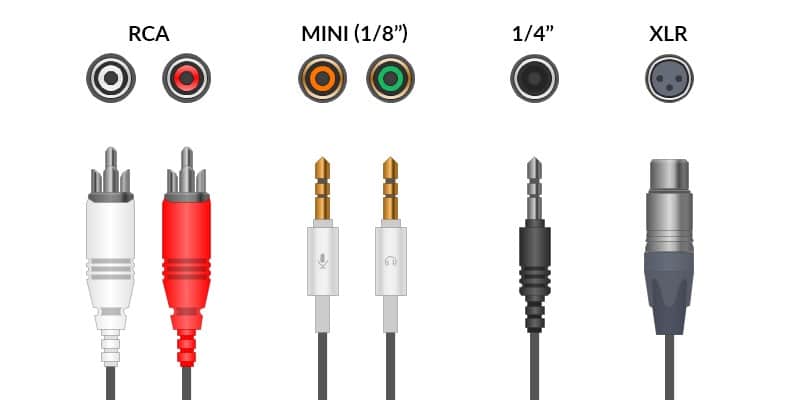Having the ability to troubleshoot your own technical issues can be a huge asset in many ways. First, it makes your more valuable to an employer if you’re able to contribute to the setup and take down of your broadcast, and it affords you more comfort in your surroundings if you have a working knowledge and understanding of how your signal is getting from A to B. In this edition of Tech Tips, we’ll look at audio cables…the different types, what they’re used for and which ones are best for each situation.

RCA
The use of RCA audio cables is everywhere and for years were the primary method of delivering video and audio from devices to your television. Game systems, DVD players and more shipped with those tri-colour yellow, red and white cables that would hook into the back of your television. You can tell them apart very easily with their bright coloured coating and universal colour coding system. The yellow cable always carried video, while the red cable was the right channel of audio (red for right) and the left channel was usually a white wire, although sometimes it came in a different colour.
RCA audio cables are FANTASTIC for sportscasting as they carry a good quality signal a reasonable distance for a very low price point. These cables are very easy to find (thrift stores, dollar stores, garage sales, etc), plug into most mixers and are easily adapted into different types of cables. They are a mainstay in any broadcast kit and can be very useful to have on hand. The downside to RCA cables is that they can be fragile with a thin wire, they don’t handle interference from power or other systems very well and if you’re running a signal over 50ft, you’ll get some degradation with the quality of the audio.
Mini (1/8″)
Perhaps the most common audio cable in the world, this one has many names from mini, to 1/8″, to headphone jack. This small, compact cable is often able to ‘click’ into a plug giving an extra bit of security in your connection. They’re cheap, easy to find, easy to adapt into 1/4″ or other formats and can be very handy when used with mixers. A lot of the drawbacks are similar to RCA’s in that they are thin and not designed to be run over super long distances. When you get a bunch together, particularly with other cables carrying internet or power, you can open yourself up to interference.
1/4″
Popular in professional audio and music circles, the 1/4″ cable is the big brother of the mini that we mentioned above. Improved in just about every way, a 1/4″ cable is typically thicker and more insulated than it’s 1/8″ brother. It’s also capable of going longer distances so it’s popular with musicians and it’s typically the cable you’ll see attached to guitars to get that signal into a mixing or speaker environment. The thicker plug is more durable to wear and tear and many mixers have plenty of 1/4″ inputs and outputs meaning it’ll be the plug you use most often. As for distance, while they can go longer than both RCA and 1/8″ there are limitations to this.
XLR (External Line Return)
Arguably the best cable for delivery of a clear audio signal. A well made 3-pin XLR cable will be completely insulated, have interlocking plugs for multiple cable runs and be able to run hundreds of feet without losing any audio quality. This cable is again very popular in the professional audio and music worlds, with thousands of feet of XLR cables being used to put on live concerts or sporting events.
XLR cable are typically quite expensive, but it’s a classic case of getting what you pay for. A good quality XLR cable, run properly at a particular venue will stand up to wear and tear, weather and other environmental scenarios better than any other cable and is best used for long distance, long term projects.
While there are several other audio cables that deliver great quality sound, the four listed above are the most common for sportscasters to come across in their careers. If you’re looking to make a quick connection over a short distance, RCA is tough to beat for the very low price point. Similar things can be said about 1/8″ or 1/4″ connectors as well. However if it’s a long term or long distance application then you’re best investing in some XLR audio cables to better deliver high quality sound on a consistent basis.



